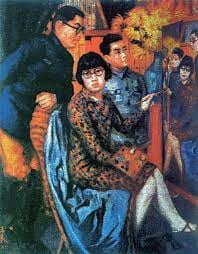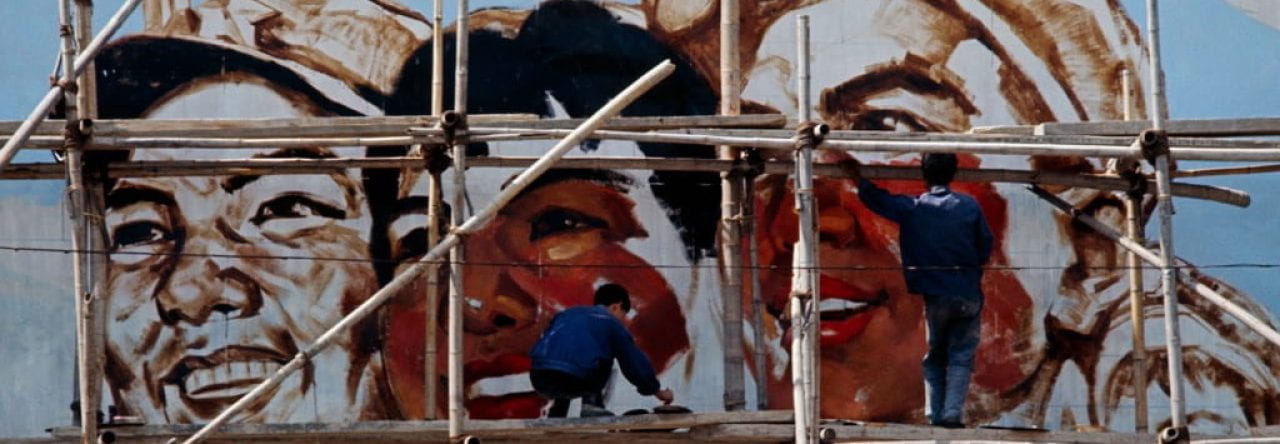Pan Yuliang (1895-1977) was a female artist who remained active for most of her life. She created artwork during the May Fourth Movement (1919) and the Modernist movement (which lasted into the 1940s). These movements aimed to break free of traditional practices by calling for gender equality as well as incorporating Western-style paintings (i.e. color and oil). Out of these movements, Pan drew inspiration from Matisse’s (1869-1954) Impressionist style (which began in the 1860s) and use of bright colors. Throughout all of her paintings, she becomes vulnerable, sharing her experiences and longings as a Chinese woman in twentieth-century China.
Throughout this exhibition, I will describe Pan’s longings, growth, and acceptance of herself and her experiences. As a female painter, Pan experienced enormous backlash. This was because Pan’s exploration of herself through nudity was not accepted in Chinese society. Traditionally, men were privileged with exploring the nude body while women were sheltered from this subject. Pan took this a step further by connecting her personal experiences to her paintings. Her exploration of this often disgusted viewers because they believed it was perverted, and that women were meant to create dainty images that did not contain self-exploration.
This exhibition will include My Family (1931), Self-Portrait with Chrysanthemums (1940), Seated Nude (1953), Mother and Child (on the beach) (1961), and Self-portrait (1963). The first two paintings: Figure 1 and Figure 2 are not nude portraits. Introducing the exhibition with non-nude portraits and then finishing it with nude portraits shows Pan’s shift from societal constraints to societal freedom. Pan’s critique of Confucius/traditional values become more prevalent throughout the years. To be more specific, Figure 1 subtly addresses passion over family through a portrait of her family. Figure 2 tackles beauty and tradition by displaying an inaccurate self-portrait with traditional Chinese symbols. The shift in Pan’s freedom can be seen in Figure 3 as it embraces the curves of the body but at the same time, shelters the body. This is to more openly explain Pan’s grievances on the body shaming she received. Pan becomes more daring in Figure 4 by showing a mother breastfeeding her baby in public. This was an extremely taboo subject, especially presenting it nude. She was also commenting on her longing of being a mother. Finally, Figure 5 portrays Pan (in her old age), content, alone, drinking, and fully embracing herself and free of social constraints.

Figure 1. Pan Yuliang, My Family. Oil on canvas, (1931). Image source: Facebook post in Who Does She Think She Is?

Figure 2. Pan Yuliang, Self-Portrait with Chrysanthemums. Oil on canvas, (1940), 35 3/8” x
25 1/4″. Image source: “The Art of Pan Yuliang: Fashioning the Self in Modern China.”

Figure 3. Pan Yuliang, Seated Nude. Oil on canvas, (1953), 13″ x 18 1/4″. Image source: Great Women Painters

Figure 4. Pan Yuliang, Mother and Child (on the beach). Oil on canvas, (1961), 99 x 80 cm. Image source: Yishu: Journal of Contemporary Chinese Art.

Figure 5. Pan Yuliang, Self-portrait. Oil on canvas, (1963), 12 3/8″ x 10 1/8″. Image source: “The Art of Pan Yuliang: Fashioning the Self in Modern China.”
Bibliography:
Hunegs, Simon, and Maia Murphy. Great Women Painters. Edited by Simon Hunegs and Maia Murphy. London: Phaidon Press Limited, 2022.
Ng, Sandy. “The Art of Pan Yuliang: Fashioning the Self in Modern China.” Woman’s Art Journal 40, no. 1 (2019): 21–30. https://www.jstor.org/stable/26746738.
Teo, Phyllis, et al. Rewriting Modernism: Three Women Artists in Twentieth- Century China: Pan Yuliang, Nie Ou and Yin Xiuzhen. Leiden University Press, 2016.
Wallace, Keith, ed. Yishu: Journal of Contemporary Chinese Art, 2010. http://yishu-online.com/wp-content/uploads/mm-products_issues/uploads/yishu_38_v09_03.pdf.
“Who Does She Think She Is?” Facebook, July 7, 2016. https://www.facebook.com/WhoDoesSheThinkSheIs/photos/a.77451845937/10153509411145938/?type=3.




